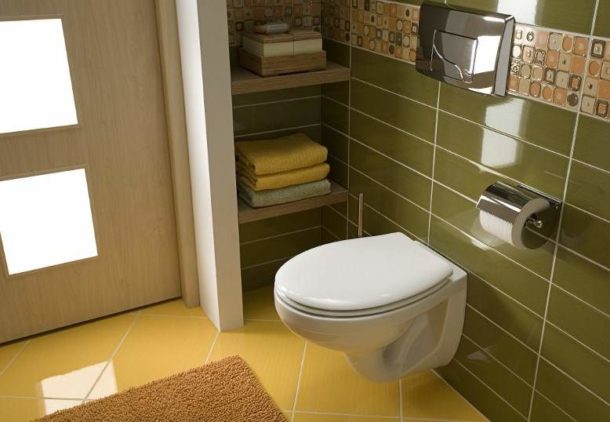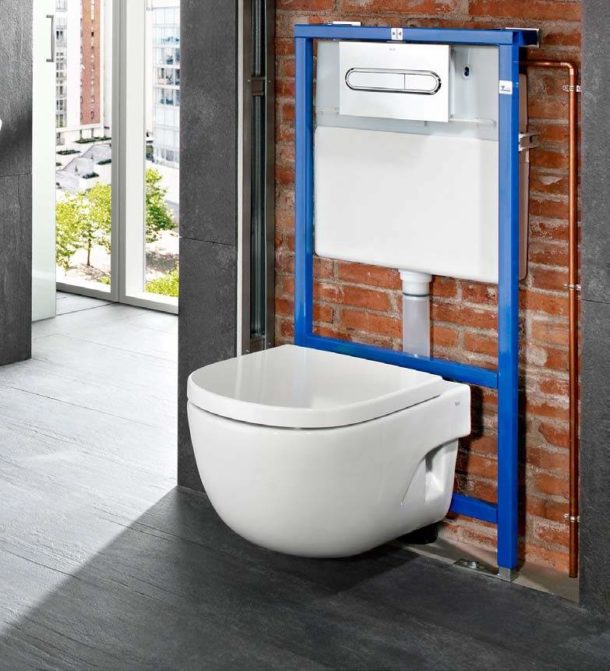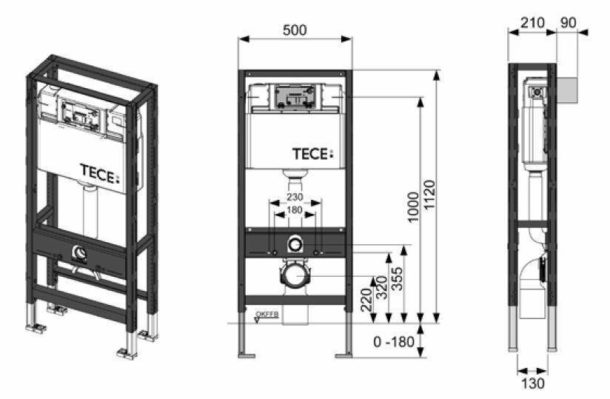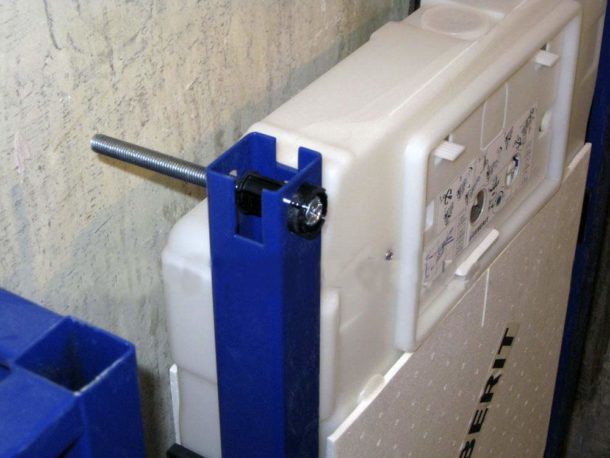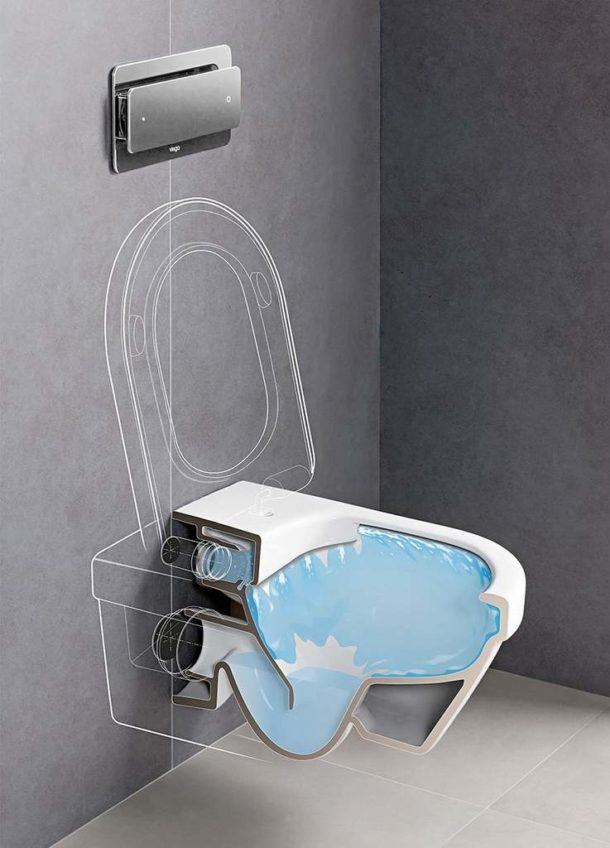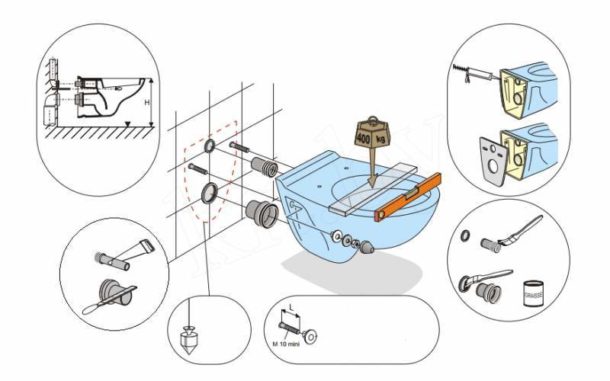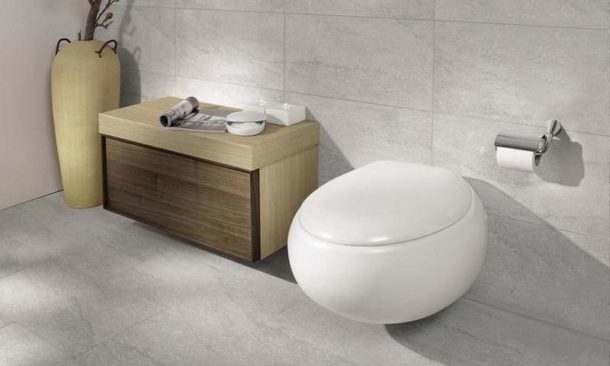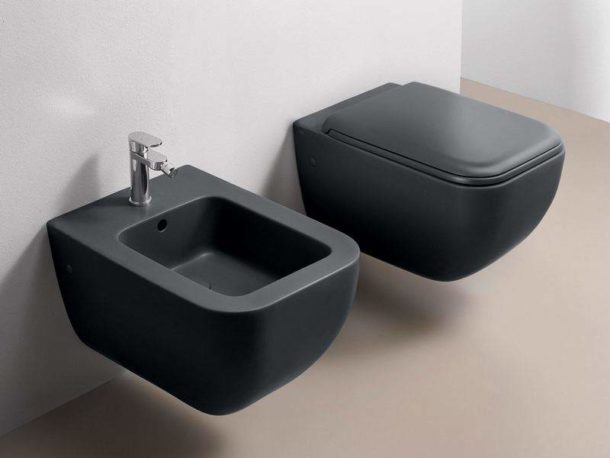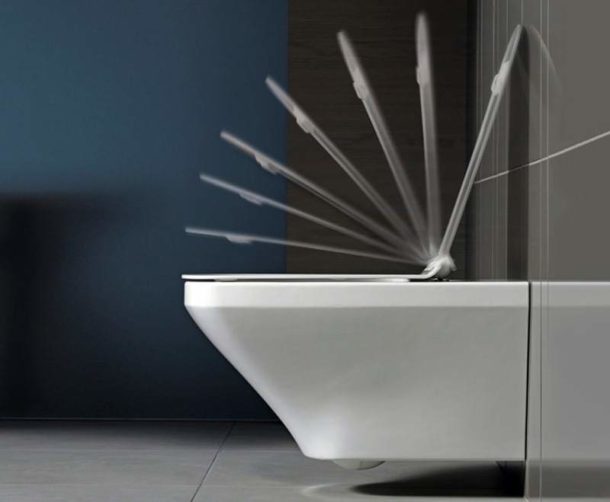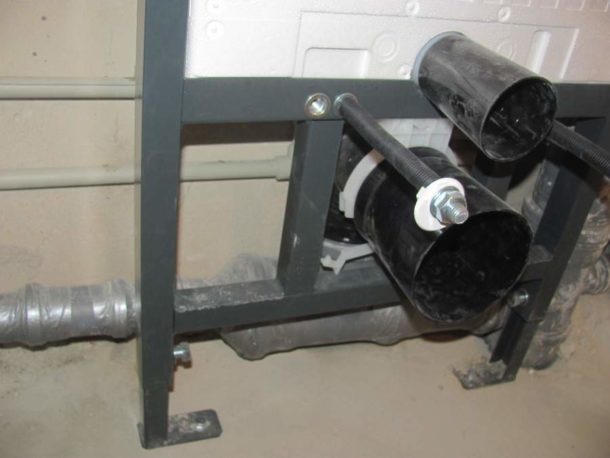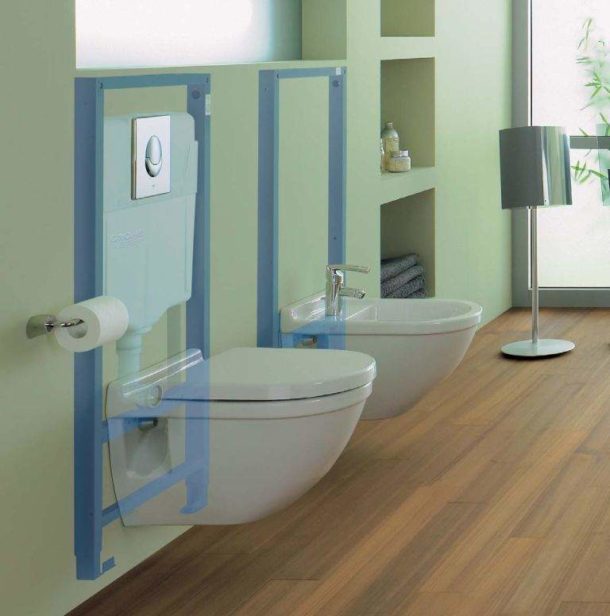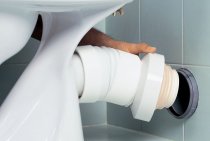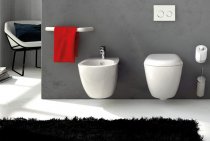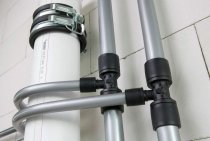Since most apartments cannot boast a large bathroom area, compact and stylish wall-hung toilets are becoming more and more popular. Apartment owners are not even stopped by the fact that the cost of hanging toilets is higher than floor-standing ones, and it is more difficult to mount them. If you are also impressed by the benefits of suspended structures and decide to update the plumbing in the bathroom, information on how to install a wall-mounted toilet yourself will be very useful to you.
Installing a wall hung toilet provides the following obvious benefits:
- The device takes up little space. Even more space is saved when installing corner toilets.
- The drain tank and communications are hidden from prying eyes, making it easy to keep the room clean.
- When the drain system is hidden, its mechanism works almost silently.
- Aesthetic look.
Before self-installation of a wall-hung toilet, you should read the general installation rules and instructions. If incomprehensible moments and questions remain about installing a toilet bowl with your own hands, the video presented on the site will become a reliable source of information and help you understand how the process works in practice.
Frame
The scheme for installing a wall-mounted toilet bowl provides for a separate and hidden placement of the tank and fixing the bowl on steel frame (installation), which, in turn, is attached to the floor and the main wall. The installation is mounted after laying and bringing out the water pipes. High-quality installation of a wall-mounted toilet bowl primarily depends on the correct installation of the frame.
- The installation is leveled.
The installation height of the hanging toilet according to SNIP is 1 m to the tank, and the bowl from the floor level: 40-43 cm. It is regulated by a special mechanism on the frame.
- The height of the wall-hung toilet from the floor may be greater if family members are tall. The remaining parameters are selected according to the instructions.
- The frame is attached to the floor and wall with anchor bolts so that the structure is stationary. If necessary, make an additional mount, which the instructions may not provide.
- After assembling the structure, the tank with communications is sealed with drywall or decorative panels. The material should be moisture resistant.
- The bowl is attached to special pins at the last stage of installation.
cistern features
The cistern of a wall-hung toilet differs from the usual one because it is wide and flat. It is attached to a steel frame. The formation of condensate is excluded due to the insulation of the tank.
The water release button is mounted on the front, in a special cutout. The installation of the toilet bowl provides access for repairing the tank through this hole, which will allow you to get to the drain fittings without disassembling the casing.
The volume of the tank is not less than usual. Some water drain devices provide for the possibility of draining water in portions of different volumes - 3 and 6 liters each.
toilet bowl
The bowl is the main part of the whole structure: it is she who is in sight. It can take different forms:
- square;
- rectangular;
- oval;
- round;
- drop-shaped;
- triangular.
Fixing for installation is carried out using a special set of fasteners. A lid is placed on the bowl.
The cover should be given special attention. An interesting option is a design with a microlift operating on the principle of a door closer. The device provides independent smooth closing of the bowl, you only need to give the lid an initial movement, and the mechanism will independently cope with further lowering.
In order not to spend extra money on a new cover with a microlift, it is advisable to buy a toilet bowl, which is already included in the kit. In total, everything will cost less.
Step-by-step instructions for installing a toilet bowl
Installation of a wall-mounted toilet bowl is carried out with the following tools:
- a set of keys;
- drills for concrete according to the size of fasteners;
- perforator;
- building level;
- marker.
Location selection
The standard installation of a hanging toilet bowl with installation is done near a niche with communications. If the tank does not fit in it, the pipes inside must be moved to the sides.
Important! Worn-out steel or cast-iron pipes installed in a niche should be replaced with plastic ones. At the same time, it is not allowed to leave parts of old communications in the ceilings.
The mounted tank and installation are often closed with a false wall.
Marking is done in advance. A line is drawn on the wall, coinciding with the central axis of the device, and the distance from the frame to the wall is measured (standard - 13.5 mm). The location of the toilet bowl is marked. The installation is set according to the building level, after which marks are made for the mounting holes at the attachment points.
Choosing a wall hung toilet
When choosing a suitable product, use the following tips:
[smartcontrol_youtube_shortcode key="suspended toilet selection" cnt="4" col="2" shls="true"]- When choosing a model, it is better to give preference to sanitary ware products that have a less porous structure, due to which plaque is more easily removed from them. Pottery is whiter and looks more impressive when new. But the porous structure and brittleness are notable disadvantages in practical applications.
- The shape of the bowl is matched to the style of the rest of the plumbing. The connection scheme to the sewer is chosen the same as the old version, otherwise there will be difficulties with the installation in the future.
- You can choose any color, although classic white will always remain relevant. Thanks to a wide range of toilet bowls, you can easily choose your version of the model that will match the interior.
- Inside, the bowl may have a step to prevent splashing, or have a complex drain shape with an anti-splash function. The latter option is more preferable.
- Drainage method may vary. Soulful is popular. If the drain is a stream, it is noisier and less efficient. An economical drain with two modes has come into fashion, when the water from the tank is completely or only half drained of your choice.
- As for manufacturers, preference should be given to products from Germany, Czechoslovakia, Italy and Poland. Domestic toilets also have a good level of quality and design. Turkish and Chinese products sometimes fail due to violations of manufacturing processes.
Mounting the installation
Any installation manual for a wall-hung toilet provides installation installation. In rare cases, the bowl is attached directly to the wall, since the frame is expensive.
- For installation, holes are drilled in the floor and wall at the marks.
- The frame is then secured with anchor bolts.
- It is especially important to precisely set the frame on which almost all the equipment is mounted. It is installed horizontally with the help of legs, which are then fixed in a certain position. The vertical level is set by adjusting the anchor thread, after which it is fixed.
The installation is screwed to the wooden floor with powerful screws.
Supply of communications
Water supply and sewerage are supplied to the installation site in advance. On the frame there are clamps for fixing the supply pipe leading to the drain tank and the sewer pipe. Communications are connected and fixed to the installation.
Important! It is strongly recommended to use rigid polypropylene pipes instead of hoses with a minimum number of connections, as they have a longer service life. If space is limited, a bellows liner can be used.
Tank and bowl installation
The drain tank is mounted in the place intended for it with the help of fasteners. If the frame design is self-made, it is installed at a height of 0.5 m from the bowl.
Then pipes are laid. Installation must be done as efficiently as possible so that there are no leaks.
The outlet of the toilet bowl is connected to the sewer outlet with the help of corrugations, the connections are sealed, and then the bowl is screwed onto the pins.
After installation work, the toilet bowl is checked for performance and for leaks. Deficiencies found should be corrected immediately. If necessary, the installation height of the installation toilet is adjusted.
To hide the frame with the tank and later have access to them, it is convenient to install roller shutters.
The cost of installing a wall hung toilet
Installing a hanging toilet without installing an installation in Moscow and the Moscow region costs from 1,700 to 3,000 rubles. Installation of a panel with drain buttons from 200 to 600 rubles. Similar work in St. Petersburg will cost from 1200 to 2700 rubles, the installation of flush buttons in St. Petersburg starts from 180 rubles. Prices vary widely across regions. For a more accurate estimate of the cost, use our repair cost calculation form.
Conclusion
The wall-hung toilet with installation looks aesthetically pleasing and is a durable device. Despite the high cost, it has undeniable advantages over the floor model. Do-it-yourself installation of a hanging toilet bowl is carried out in accordance with the instructions and general installation rules.
